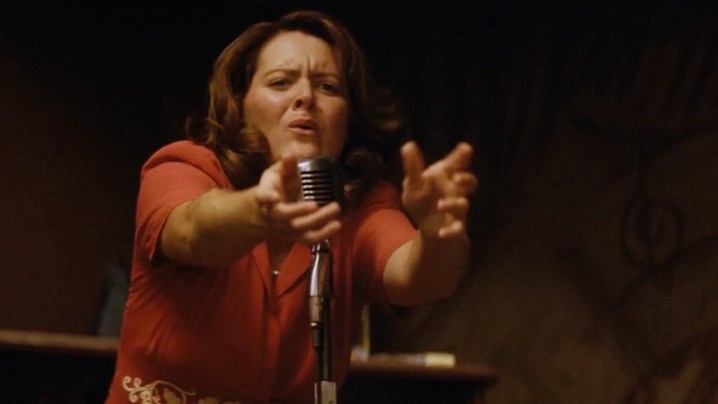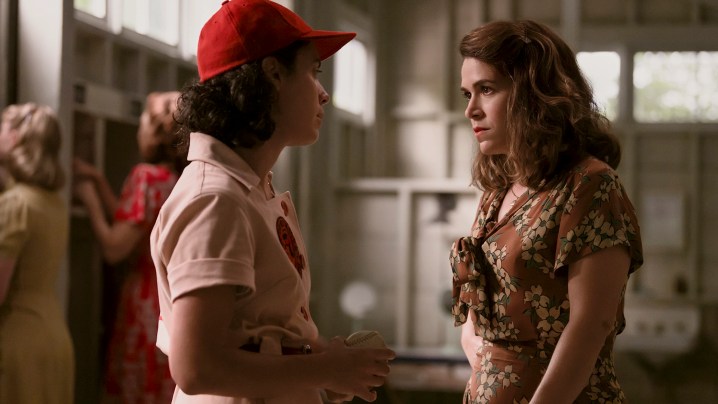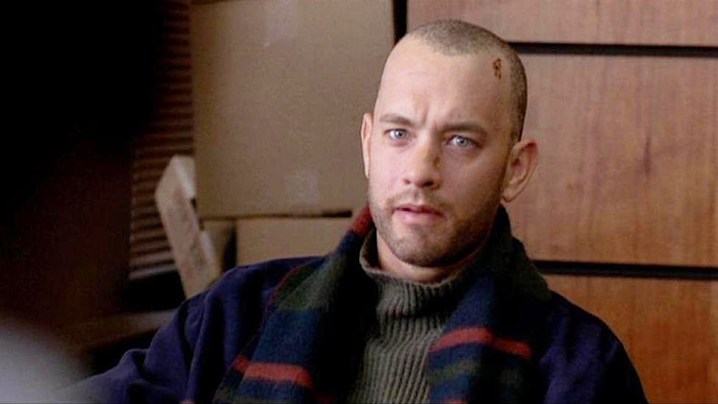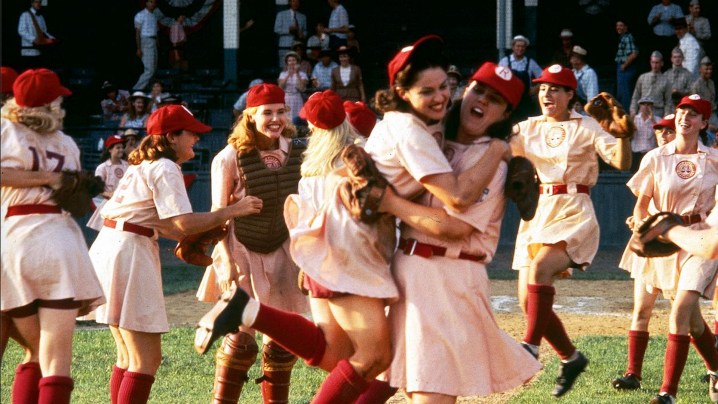Not surprisingly, Amazon’s new A League of Their Own series, based on Penny Marshall’s beloved 1992 movie about the WWII-era All American Girls Baseball League, goes further than the 30-year-old film in progressively engaging issues of gender, race, and sexual orientation.
Though the movie is feminist in advocating for gender equality and girl power, it was made within a Hollywood studio system that was unwilling to go near LGBTQ+ issues and representation, and which hardly employed women directors at all. Marshall, who had made the Oscar darling Awakenings a few years earlier, was one of the few with clout enough to make a sports movie about women. But even the rare film made by a woman still carried the male sensibilities that pervaded the movie business.
More than just an entertaining baseball picture and a pitch-perfect comedy, A League of Their Own is also a fascinating document epitomizing the early 1990s, a moment just before American culture began to change radically, ushering in the Clinton era and revolutions in politics, music (Nirvana changed everything), fashion, and independent cinema.
The stellar cast is so of its moment

A primary reason that A League of Their Own feels so specific to its time is the cast, a who’s who of actors who were hot at the moment. Geena Davis, who plays Dottie Henson, the talented but reluctant star catcher of the Rockford Peaches, was at the height of her stardom in 1992, a year after her Oscar-nominated turn in Thelma and Louise, and a few years after winning a Best Supporting Actress Oscar for The Accidental Tourist.
Lori Petty as Kit Keller, Dottie’s younger sister and one of the team’s pitchers, was an “it” girl in early ’90s hits such as Point Break and Free Willy before the infamous debacle, Tank Girl, blew up her career as a leading actor. Many of the supporting actors were in their popular primes as well, including Jon Lovitz, a few years removed from a popular stint on Saturday Night Live, David Strathairn, Bill Pullman, and Rosie O’Donnell.
It’s hard to believe — given how things turned out for him — but the career of Tom Hanks, who plays the washed-up manager and alcoholic ex-Big League star, Jimmy Dugan, was not in a great place at the time. Penny Marshall had transformed his reputation a few years earlier by directing him in the instant classic, Big, for which he was nominated for his first Academy Award. But in subsequent years he squandered some of his newfound popularity and esteem by appearing in duds like Punchline, Turner and Hooch, Joe vs. the Volcano, and the infamous The Bonfire of the Vanities.
But whatever recipe the director and actor cooked up in Big obviously still worked. Not only did Marshall give Hanks a juicy part that included the now legendary “There’s no crying in baseball,” speech, but A League of Their Own kicked off what may remain the hottest streak any big star ever pulled off.
From 1993 – 2000, Hanks headlined Sleepless in Seattle, Philadelphia, Forrest Gump, Apollo 13, Toy Story, Saving Private Ryan, Toy Story 2, The Green Mile, and Cast Away. Somewhere the actor is polishing the two Oscars he took home during that unprecedented era — he won for Philadelphia and Forrest Gump and was also nominated for Saving Private Ryan and Cast Away — and thanking the dearly departed Marshall (she died in 2018).
Madonna’s incendiary presence

Not everybody was on board with Madonna playing the pivotal role of Mae Mordabito, center fielder for the Peaches. Debra Winger famously quit as the original lead when Madonna was cast, saying the movie would become an “Elvis film.” As one of the biggest stars in the world — one who controversially pushed and blurred the boundaries of gender and sexuality (in her smash video for “Vogue,” for example) at a time when that met a lot more cultural resistance — she could have been a diva or distraction.
For example, Marshall devotes so much time to an extended scene in which the Material Girl swing dances in a roadhouse that the players visit, one wonders if such a scene wasn’t mandated in the singer’s contract. But she is spectacular to watch, and it’s nice that the movie preserves this time capsule, perhaps one of the reasons the Library of Congress chose A League of their Own in 2012 for the National Film Registry (as it did for the musical performances of Aretha Franklin, Ray Charles, and others in The Blues Brothers).
Despite the showcase scene, Madonna blends seamlessly with the ensemble and even looks convincing in the sports action. But her presence does complicate the movie’s feminist themes, especially given all the jokes that are made about her promiscuity. At one point, somebody asks her character — nicknamed All the Way Mae — “You think there are men in this country who ain’t seen your bosoms?” And that was even before the release of her famous Sex book, which came out later that year.
It might be funnier if Madonna hadn’t been slut-shamed so horribly in real life, crucified for her bohemian attitudes towards sex and for being an LGBT friend and ally during a time when the dominant culture depicted gay people as morally deviant and responsible for the AIDS crisis. One or two sardonic jabs might be OK, but the deluge of jokes about Mae’s sex positivity feels cruel and regressive now.
Feminism and representation

It’s also hard to watch that roadhouse scene and not consider it in the context of Thelma and Louise, in which Davis and Susan Sarandon had become instant feminist icons as the titular characters. The men in this roadhouse are not entirely unlike the one that Louise shoots when he tries to rape Thelma, but there’s little sense in A League of their Own that anything is amiss with their behavior, though they get pretty handsy with the women. One even kisses Kit without her knowledge or permission.
Surely, the scene approximates the reality of gender power relations in the 1940s when it is set, but it’s hard to tell if the unprovoked kiss and the men’s aggressive behavior are something that the movie is trying to condemn.
There are also more than a couple of unkind jokes at the expense of “unattractive “women, such as the star slugger Marla Hooch (Megan Cavanagh), whom men literally shudder at. Like the jokes about Mae, this sort of material wouldn’t fly in a progressive comedy today, and it’s not surprising that the screenplay was written by two men, Lowell Ganz and Babaloo Mandel, who were hot at the time, having written Billy Crystal’s big hit, City Slickers, the year before.

While the film does make reference to real issues that women face, such as managing work and child care and dealing with abusive men (“she reminds me of my husband,” one of the players says of another after a few of them get into a scrum), the movie would certainly have played differently with at least one woman writer helping Marshall guide this tale of second-wave feminism. (Yes, third-wave feminism was getting underway at the time, but Hollywood is always at least a decade behind the times, not least because movies languish in development for so long.)
The Amazon series, meanwhile, features a much more diverse writing and directing staff. It’s co-created by the bisexual Abbi-Jacobson, one of the brains behind the uproarious Broad City about two friends negotiating life and sexual fluidity in New York, and she foregrounds the queer romances and desire even before a lot of the baseball action gets underway (which also begs the question of why remake this particular movie in an era when Americans, and young Americans especially, don’t seem to care much about baseball).
As a consequence, the show feels very contemporary. In its dialogue, character interactions, and overall sensibilities, the series is clearly born of the present moment and plays more like a fantasy of the 1940s than a realistic depiction — which is not necessarily a bad thing as long as you don’t go in expecting historical fidelity.

In contrast, the movie is resoundingly heterosexual. Of course, out same-sex relationships rarely existed in the 1940s, and especially not in a public enterprise like professionals sports, but the movie’s failure to even hint at queer desire in an all-girl’s league has less do to with the social and cultural conventions of the 1940s and more with Hollywood movies of the early 1990s in which gay people virtually didn’t exist.
A year after A League of Their Own, Hanks would play a gay man with AIDS in Philadelphia, a movie that got tremendous attention because of its revolutionary humanizing of homosexuality onscreen, underscoring how rare such a depiction was. And even though an independent cinema began to sweep American film during that time, it was still an aggressively heterosexual male cinema (Quentin Tarantino, Robert Rodriguez, et. al.) with only a few outliers bringing gay representation to the screen, including Gregg Araki and Todd Haynes. There was virtually no lesbian representation at all.

As such, it is unsurprising that the women in the movie version are not only straight, but sexualized for the male gaze. In the film, when the players show up from provincial locales with boorish manners and mud on their clothes, the league forces them through a crash course in ladies’ etiquette and decorum, outfits them in short skirts, and makes them wear elaborate hair and makeup during games.
In practice, this means the actors wear hair and makeup and short skirts throughout, and that the male gaze being appealed to is not just that of the male characters in the stands, but also the men watching in the theater. Unfortunately, the insistence that women on screen look young and conventionally attractive hasn’t changed much in thirty years and has probably even been exacerbated by the idealized images on social media.

Where the movie does still feel radical is in its depiction of the older versions of the characters who occupy the movie’s long epilogue (seriously, Peter Jackson must have been taking notes). The movie bookends the main flashback action with contemporary scenes of the players in their 70s as they reunite for an induction of their league into the Hall of Fame, then celebrate with a game afterward. The movie devotes ample screen time to these older women, still a group that youth-addicted movies and television rarely represent.
A League of Their Own remains a fascinating cultural document, an indelible snapshot of early ’90s Hollywood and culture just before everything changed. Despite its issues, it’s still an entertaining and inspirational tale full of spirited performances and worthy messages about tolerance and equality which the Amazon series updates for our age. Perhaps 30 years from now yet another remake will illuminate the blind spots of what we consider progressive and enlightened in our own cultural moment. Though one does wonder if young people then will have any idea what baseball is.
You can stream both the original A League of Their Own movie and 2022 series on Prime Video.



